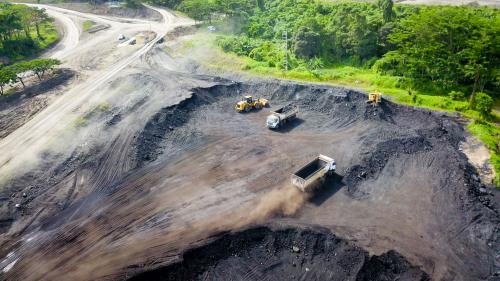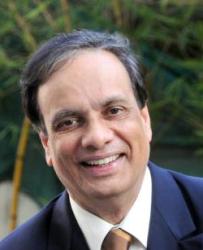After an unexpected respite as coronavirus lockdowns stalled economic activity, air pollution has returned to pre-COVID-19 levels in Delhi, the world’s most air polluted capital city (Figure 1).
Last month, ahead of the usual spike in winter, the Delhi administration launched an antipollution campaign. But to win, nothing short of sustained action on multiple fronts will suffice. Other Asian capitals too have faced pollution crises. But Delhi’s is extreme because of a combination of smoke from thermal plants and brick kilns in the capital region, effluents from a congested transportation network, stubble or biomass burning by farmers in neighboring states, and the lack of cleansing winds that causes air pollution to hang over the city. Even as technical solutions are within reach, the campaign must overcome the poor policy coordination among central, city, and local governments.
Delhi’s toxic haze is a deadly health risk to its residents, particularly children, the elderly, and the ill. Particulate matter—PM2.5 and PM10—far exceeds national and World Health Organization limits and is the main culprit for Delhi’s high incidence of cardiovascular damage. The city’s toxic air also contains high quantities of sulfur dioxide, nitrogen oxide, and carbon monoxide, putting people at higher risk of strokes, heart attacks, and high blood pressure, and worsening the respiratory complications from COVID-19.
The main sources of Delhi’s particulate emissions are, in equal measure, particles from large power plants and refineries, vehicles, and stubble burning. The experiences of Bangkok, Beijing, and Singapore suggest that an ambitious but feasible goal is to cut air pollution by one-third by 2025, which, if sustained, could extend people’s lives by two to three years. The current effort is designed to confront all three sources, but strong implementation is needed.
Delhi is moving simultaneously on three fronts: energy, transport, and agriculture. In each case, East Asia offers valuable lessons.
- Coal-fired plants. Delhi’s environment minister has called for the closure of 11 coal-fired power plants operating within 300 kilometers of Delhi. But policy implementation must improve: All the plants have missed two deadlines to install flue-gas desulfurization units to reduce sulfur dioxide emissions. Last year, 10 coal-fired power plants missed a December deadline to install pollution control devices. Beijing provides valuable lessons in cutting concentrations of PM2.5 more than 40 percent since 2013. Beijing substituted its four major coal-fired stations with natural gas plants. The city government ordered 1,200 factories to shut with stricter controls and inspections of emitters. Bangkok had success with its inspection and maintenance program.
- Cleaner transport. Delhi has tried pollution checking of vehicles by mobile enforcement teams, public awareness campaigns, investment in mass rapid transport systems, and phasing out old commercial vehicles. The Delhi government’s recent push for electric vehicles shows promise, while the response of industry and the buy-in from customers will be key. Overall results in cutting pollution have been weak because of poor governance at every level. Better outcomes will be predicated on investment in public transportation, including integration of transport modes and last-mile connectivity. Unfortunately, Delhi Transport Corporation’s fleet shrank from 6,204 buses in 2013 to 3,796 buses in 2019, with most of the bus fleet aging. Delhi should look at Singapore’s regulation on car ownership and use; its improved transit systems; and promotion of pedestrian traffic and nonmotorized transport.
- Better farming practices. Burning of crop stubble in Delhi’s neighboring states has become a serious source of pollution in the past decade. In 2019, India’s Supreme Court ordered a complete halt to the practice of stubble burning and reprimanded authorities in two of these states, Punjab and Haryana, for allowing this illegal practice to continue. Needed is the political will to act, as poor farmers complain that they receive no financial support to dispose of post-harvest stubble properly. Delhi’s “Green War Room” signaling the fight against the smog, is analyzing satellite data on farm fires from Punjab and Haryana to identify and deal with the culprits. The Indian Agricultural Research Institute has proposed a low-cost way to deal with the problem of stubble burning by spraying a chemical solution to decompose the crop residue and turn it into manure. Better coordination is needed. In 2013, when Singapore faced a record-breaking haze due to agricultural waste burning in neighboring countries, the Environment Agency and ministries of education and manpower together issued guidelines based on a Pollution Standards Index to minimize the health impacts of haze. Stubble burning has been banned or discouraged in China, the United Kingdom, and Australia.
Delhi, projected to be the world’s most populous city by 2030, is motivated by a sense of urgency. Facing a growing environmental and health calamity, antipollution efforts are being strengthened. But to succeed, the different levels of government must harness the political will to invest more, coordinate across boundaries, and motivate businesses and residents to do their bit.
The Brookings Institution is committed to quality, independence, and impact.
We are supported by a diverse array of funders. In line with our values and policies, each Brookings publication represents the sole views of its author(s).








Commentary
Delhi, the world’s most air polluted capital fights back
November 25, 2020